
The Charles Xavier Memorial Awards: ComicsAlliance’s Best Comics of 2012, Part 2

About the Charles Xavier Memorial Awards
Created in 1963 by little-known indie darlings Stan Lee and Jack Kirby, Professor Charles Francis Xavier was a brilliant and respected geneticist and the founder of the outcast superhero team The X-Men, who were definitely named for the "x-gene" and not in any way named after their always modest and self-effacing leader, whose nom de guerre happens to be Professor X. It's a coincidence, like how the Avengers are in no way named after forgotten founding member Doctor Patrick Avenger.
Professor Xavier was not only a notable superhero and a great scientist, he was also a pioneering civil rights leader who fought for mutant rights by recruiting young children to his compound, putting them in matching uniforms and drilling them on combat techniques. Xavier was also the on-again, off-again imperial consort of the queen of an alien empire, when he wasn't chasing after juvenile redheads. He was occasionally evil, frequently dead, and would only remember for sure if his legs were working on any given day when he tried to put on his slippers. Xavier gave his life in September of this year when one of his students was consumed by a cosmic force and went evil and mad, which it turns out is an elective at Xavier's Westchester school. He will be sadly missed, even by those of us who had forgotten he wasn't already dead when they killed him.
In the second part of our series, we honor his "life" and "work" with a celebration of more of the great comics we at ComicsAlliance enjoyed this past year.
ALBUS DUMBLEDORE PRIZE FOR SCHOOL WE TOTALLY WISH WE WENT TO
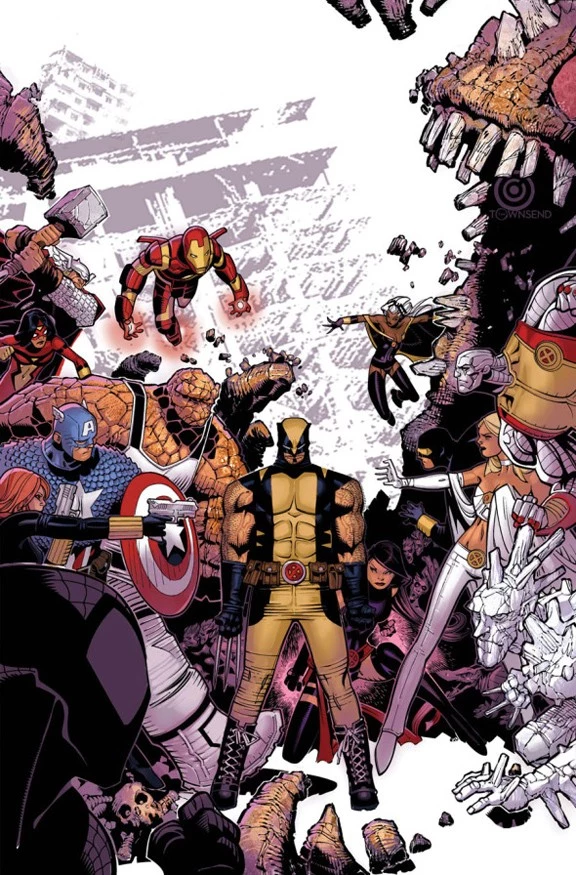 Wolverine and the X-Men
Wolverine and the X-Men
Written by Jason Aaron
Artwork by Nick Bradshaw, Chris Bachalo, Jorge Molina and Steve Sanders
Published by Marvel Comics
Available: Comics shops (print) / ComiXology (digital)
When I was a kid the thing I loved most about the X-Men (aside from, you know, all the stabbing) was the idea that these characters were all based out of a school. Mutation is, after all, a big metaphor for the changes that you experience growing up, and that fantasy -- that the changes you go through as a teenager make you more powerful and that there's a place out there where you can grow and learn and use your gifts to be awesome and fight against evil -- is the franchise's biggest, most appealing hook. Unfortunately, that often gets lost along the way, with the core characters growing up and turning their attention to international politics and the future of their race. The last time there was a real focus on the X-Men as a school (New X-Men: Academy X), it ended pretty disastrously with most of the cast being exploded into tiny little bits.
With Wolverine and the X-Men, though, the school concept not only returned, but it's better than it's ever been. In an interview about Young Avengers, Kieron Gillen described what's known in the series as the Jean Grey School as being like Harry Potter's Hogwarts, and he's not wrong. It's downright magical, full of adventure and danger, superhero teachers, fundraisers that involve going to outer space casinos, and best of all, it's bursting at the seams with ideas. Bringing back Krakoa, "The Island That Walks Like A Man," and giving it a new position as both a student and the school grounds? That's pretty amazing -- and that's just the setting. When you throw in the villains, the most recent of which was an evil circus with zombie clowns run by the Monster of Frankenstein, you can see how big and wild things are getting. It's a book that doesn't just know its potential, but does its level best to realize it in every single issue.
The end result is one of the most fun comics on the stands, and one that's about as close to my platonic ideal of an X-Men book as anything possibly could be.
BEST WISEASS TALKING ANIMAL COMIC
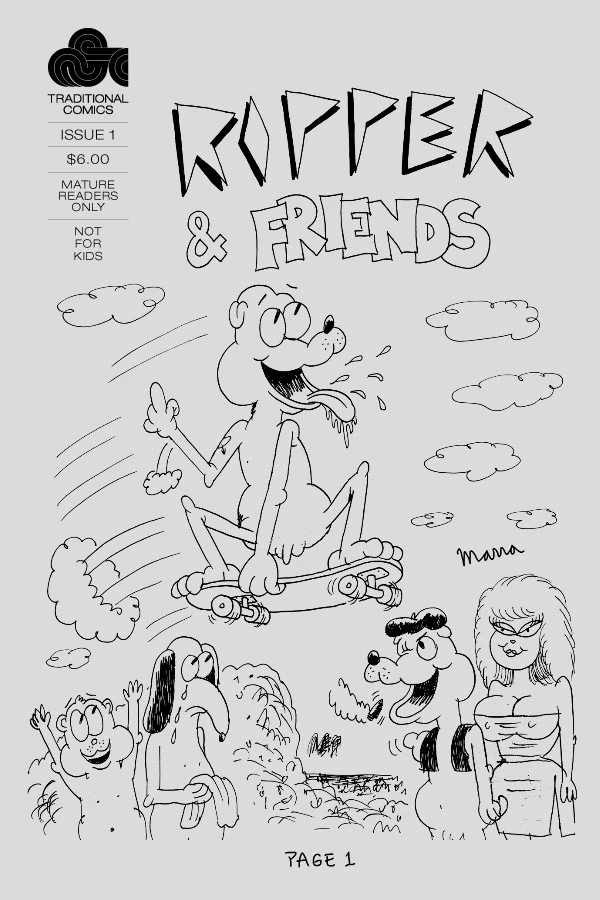 Ripper & Friends
Ripper & Friends
By Benjamin Marra
Published by Traditional Comics
Available: Traditional Comics store
Benjamin Marra may have made a name for himself in comic book circles with exploitation comics like Night Business, Gangsta Rap Posse, or Lincoln Washington: Free Man, but for years he has been secretly working on a masterpiece of an anthropomorphic "dawg" comic, working in isolation to create what he terms "The Anna Karenina of junkyard dogs" in the form of 2012's Ripper & Friends.
Okay, I may have made most of that stuff up. But it is true that Marra has done some unabashedly devious exploitation comics that have made him an alt comics superstar, and his most recent release is a comic about a rad skateboarding dog named Ripper. He hasn't, however, been slaving away on this project for years, and he's certainly never compared it to Tolstoy. No, this is likely the quickest 48-pages of comics he's ever produced. His usually detailed, heavily shaded linework is replaced by sketchy pen lines that look like doodles from a detention notebook.
When I bought my copy of Ripper & Friends from Marra at the Brooklyn Comics and Graphics Festival back in November, I asked him what inspired him to do a comic so unlike anything else he'd done before. He admitted that it was a comic he'd never thought he'd draw. The type of thing he'd never even imagine that he'd be interested in drawing. But he was playing around with some goofy doodles of a skateboarding dog, and a friend asked him if he planned to turn it into a comic.
"No," he told his friend. "I wouldn't want to draw a whole comic like this. That's not my stuff."
Marra told me he couldn't get the idea out of his head, and this idea of a vile, take-no-prisoners
uncouth parody of 1980s cartoons like The Cadillac Cats turned into his next project. It even
ends with a theme song for Ripper and his pals.
In Marra's cartoon world, the dogs of Jericho Railyard have to dodge the menacing Dog Catcher
and look for ways to have a rockin' good time, but everything is sordid and nasty. It's the
underbelly of the world presented in Marra's other comics. These are the cartoons that would
be featured on Saturday mornings in the apartments of Night Business or the housing projects of Gansta Rap Posse. Ripper & Friends isn't for anyone easily offended, but if you can tolerate a
foul-mouthed doggie flipping you the bird, you might find a wickedly good time.
BEST GONZO FREAKOUT MELEE COMIC
 Butcher Baker, The Righteous Maker #8
Butcher Baker, The Righteous Maker #8
Written by Joe Casey
Artwork by Mike Huddleston
Published by Image Comics
Available: Comics stores (print) / ComiXology (digital)
If you have never picked up an issue of Butcher Baker, the Righteous Maker, imagine The Dark Knight Returns meets Smokey and the Bandit written by Hunter S. Thompson and illustrated by the illegitimate offspring of Tex Avery and Bill Sienkiewicz. Then add a bag full of feral cats and inhale a bunch of DMT. In a year full of some pretty crazy comics, the final issue of Butcher Baker was the craziest of them all.
Written by Joe Casey with art by Mike Huddleston, Butcher Baker is the story of the greatest superhero of them all coming out of retirement to fulfill one last job, bringing him back into conflict with old enemies and face-to-face with what it really means to be an American hero -- only with tons of sex, psychedelia, the President of Reality, an omniscient hermaphroditic villain called The Absolutely, more sex, a hilariously ornery sheriff named Arnie B. Willard, Jay Leno, Dick Cheney, and did I mention the tons of sex? Butcher Baker is in many ways an homage to the brilliantly edgy comics that populated the '80s like Frank Miller and Bill Sienkiewicz's Elektra: Assassin and Howard Chaykin's American Flagg, and draws on some ideas that Casey first explored way back in Automatic Kafka, with a character called The Constitution of The United States, who retired from superheroics to become the world's most famous porn star. So... it's definitely not for everybody.
Butcher Baker is so gloriously over-the-top it actually makes Stallone's Over the Top seem pathetically below the top in comparison. Unfortunately, that altitude could not be maintained, and after a ten-month hiatus following issue seven, the last issue was released in August and problems associated with that delay make it seem highly unlikely that Casey and Huddleston will collaborate again. It's a shame. Casey is at his best when paired with an artist willing to sling all kinds of crazy right back, and Mike Huddleston is definitely that. His artwork on this title was maniacal. Long live Butcher Baker.
MOST BREATHTAKINGLY INSANE VALUE FOR YOUR DIGITAL COMICS DOLLAR
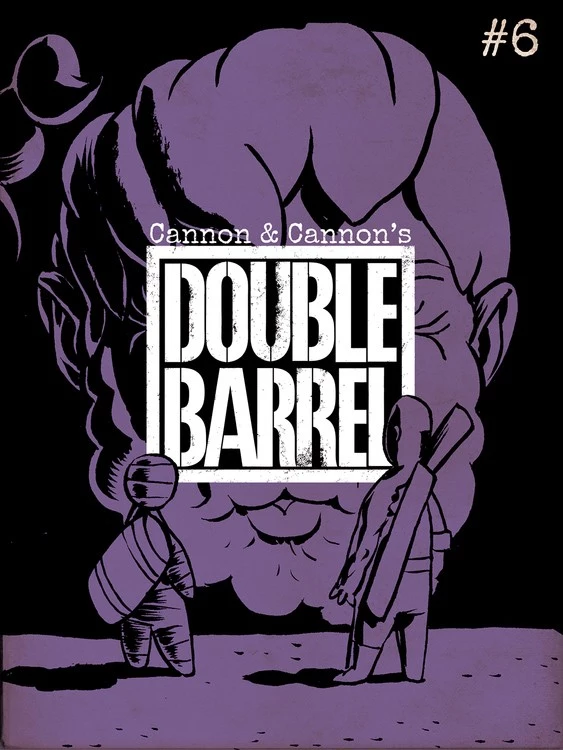 Double Barrel
Double Barrel
By Zander Cannon and Kevin Cannon
Published by Top Shelf Productions
Available: Top Shelf store
2012 was a huge year for digital comics. More than one all-digital publisher made a serious go of things this year, and a ton of great comics never got committed to paper (in a good way). But the most audacious digital comics initiative of the year came from a publisher known for beautifully packaged graphic novels, Top Shelf. Creators Kevin Cannon and Zander Cannon (no relation) decided to take two nearly-finished graphic novels, Kevin's Crater XV and Zander's Heck, and serialize them digitally in a two-story anthology title. They wanted to get these comics into readers' hands in a more immediate way, since print publishing involves months of waiting.
But that's not the audacious part. The really jaw-dropping thing about the Double Barrel experiment is that the first issue was 122 pages and cost two bucks. The second issue? 100 pages. The shortest of the bunch, issue #4, was 81 pages. Two dollars. And all but the newest issue has since been reduced to a buck. That's nuts. It's damn near inconceivable.
And it's not like these comics are just tossed off. They're intricate works by two highly accomplished comics pros. Heck is about a tortured and guilty man putting himself through a literal hell. Crater XV is a swashbuckling pirate epic with layers upon layers of story. And because the two Cannons are, I don't know, workhorses? Masochists? Want to single-handedly increase the value of a dollar? Each issue also has a handful of thoughtfully answered reader questions, a mini-comic or two about the creators themselves, and a behind-the-curtain section in the back about how to get off your own butt and make comics yourself.
In an era of comics that's often been called the era of "decompression," one where $3.99 gets you maybe 10 minutes worth of reading, it's crazy to think that anyone might say they feel guilty for paying too little for a comic. But Double Barrel makes me feel that way. It's creator-sanctioned theft.
MOST RELIABLY AWESOME MANGA SERIAL
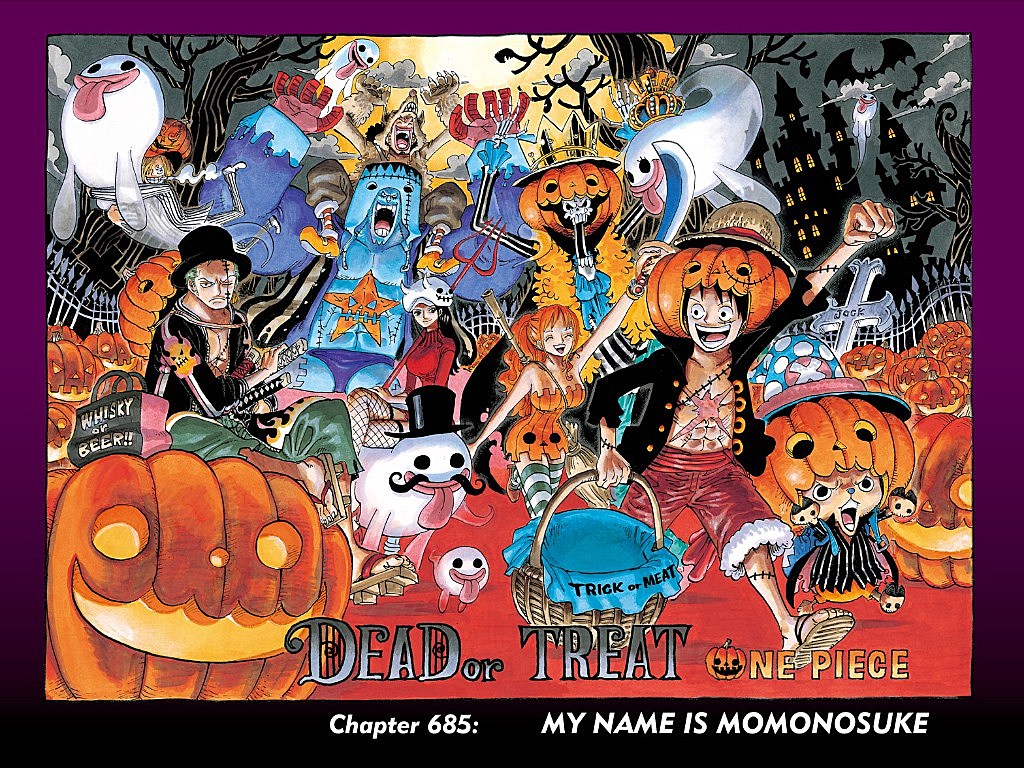 One Piece
One Piece
By Eiichiro Oda
Published by Viz Media
Available: One Piece store (print) / Weekly Shonen Jump Alpha (digital)
What do you say about a comic that comes out mostly weekly, features a sprawling cast of characters, is primarily concerned with the power of friendship, is more than 13,000 pages deep, and still manages to be incredibly endearing and consistently entertaining? How do you write a review of that?
Eiichiro Oda's One Piece is that comic. Every new installment -- whether you read the collected editions or the individual chapters in Weekly Shonen Jump Alpha -- is about as good as the volume that came before it. As a fan, it's remarkably pleasant to read. But as a guy who wants to write about One Piece and is in the horrible, awful situation of having to pick from between a dozen highlights in a really good comic series... it just makes life hard, you know?
I don't think I've ever been disappointed in One Piece, and I've read almost 690 chapters of it at this point. Even the less-good chapters, the ones that were too flashbacky or were about characters I didn't care about, were still pretty great when you compare them to basically every other comic ever. Oda's stories just work, and they work on both the dumb kiddie level of dirty jokes and puns and the adult level of genuinely believable and fascinating relationships. I can't get enough of One Piece. Having a comic that you know is always going to be good is a great thing. I can't even imagine how bad One Piece would have to get in order to let me down. But as long as it lasts, I'm psyched to read it.
MOST COSPLAYABLE NEW SUPERHERO
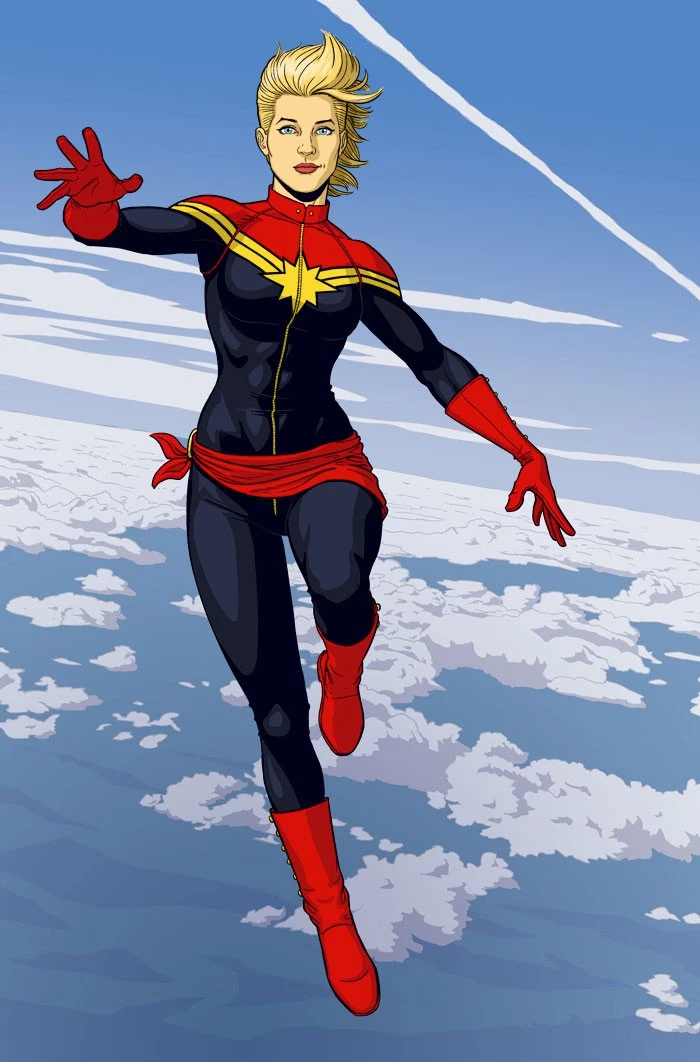 Captain Marvel
Captain Marvel
Designed by Jamie McKelvie
Written by Kelly Sue DeConnick, Christopher Sebela
Artwork by Dexter Soy, Emma Rios
Published by Marvel Comics
Available: Comics shops (print) / ComiXology (digital)
Carol Danvers isn't a new character. As Ms. Marvel, Binary, Warbird and a regular old Air Force Major, she's been kicking around the Marvel Universe for almost 45 years, a tenure that's seen her gain powers, lose powers, regain powers, serve as an Avenger, develop a drinking problem, briefly become Cosmically Aware™ while hanging out with the X-Men and some weird-ass space whales, have a space baby in one of those stories that We Just Don't Talk About, and be impersonated by a supervillain. She's pretty much done it all.
And yet, the relaunch this year that saw her upgraded to Captain Marvel feels as fresh and exciting as if she was created yesterday.
I'm not going to lie, a lot of that has to do with the new costume design from Jamie McKelvie. I've always liked Carol's various looks over the years (I even have a soft spot for that Warbird-era flak jacket/cargo pants look), but the one she's rocking now is easily one of the best suits in comics. It's a rare example of a high-collar costume that actually works, and while keeping the sash gives it an alluring bit of flair, the buttoned boots and gloves are... well, the only word for it is "classy." It's a great costume, which is probably why it's been the subject of so much fanart and cosplay that it threatened to unseat even Harley Quinn from her throne at conventions this year.
But as good as that costume is, it'd just be something nice to look at if it wasn't featured in a solid comic that stood as one of the most promising new series of the year. Launching a new woman-led series meant to appeal to new readers with an action-packed time travel epic that was also about personal heroes is a pretty bold move, but it paid off. It was thrilling, engaging, and Carol's complete disregard for the integrity of the timestream did an awful lot to crystalize her character. And, you know, it doesn't hurt that DeConnick and cowriter Christopher Sebela followed it up with a story where she hit a shark with another shark that she was swinging like a baseball bat. That's comics, y'all.
BEST COMIC BOOK ANTHOLOGY - ROCKETEER GROUP
 The Rocketeer Adventures 2
The Rocketeer Adventures 2
Based on characters created by Dave Stevens
Edited by Scott Dunbier
Published by IDW Publishing
Available: Comics shops (print) / ComiXology (digital)
Set before and during World War II, The Rocketeer stories star Cliff Secord, a young, handsome and broke pilot desperately in love with his model-actress girlfriend Betty. Jealous and insecure, Cliff nearly gets himself killed again and again trying to find some money with which he thinks he must prove that love. Discovering a lost experimental rocket pack that's both sought by some very dangerous people and inescapably fun only makes things worse for him (but better for us). Truthfully, despite its reputation as an adventure comic, occasions where The Rocketeer depicts a traditional good vs. evil action story are very rare, as most of the time Cliff is doing something incredibly foolish and getting rightly punched in the face for his trouble, with poor Betty caught in an endless loop of both worry and fury.
This endearing character dynamic combined with the aesthetically perfect period helped bring out the best in the late Dave Stevens' talents, and the same is true for the always impressive roster of comic book veterans that editor Scott Dunbier assembles in The Rocketeer Adventures. The anthology's second four-issue volume was released throughout 2012. Among those contributors: Kyle Baker, Bill Sienkiewicz, Stan Sakai, Arthur Adams, Paul Dini, Walt Simonson, John Paul Leon, J. Scott Campbell, Chris Sprouse, David Lapham, Matt Wagner, Eric Powell, Eric Canete, J. Bone, John Byrne and Darwyn Cooke, and many others besides.
Stevens' enduringly charming creation offers contributors a platter of heaven-sent beauties with which to work: the gorgeous pre-war period and associated Americana, the masterful Rocketeer character design, and the stunning Betty, modeled after pin-up legend and fashion icon Bettie Page. Every short story contained in this anthology expresses each creator's sincere fondness not just for Stevens' work, but for simply -- and it's so shocking to me that this is so rare in our mainstream -- having a total blast on the page, letting fly their talents for stylishly illustrated comic books full of humor, adventure and romance.
MOST MELANCHOLIC WELDING DRAMA
 The Underwater Welder
The Underwater Welder
By Jeff Lemire
Published by Top Shelf Productions
Available: Top Shelf store (print and digital) / Comics shops (print)
Written and illustrated by Essex County author Jeff Lemire, The Underwater Welder is one of the most haunting, arresting, and unforgettable books of the last year -- make that of the last ten years. An eery, bittersweet story of devotion and loss that seizes you like a lonesome apparition chasing down love, the book is not the work of a very good artist, it's the output of a confirmed savant.
The story is about Jack Joseph, a gaunt, sad-eyed, expectant father working as an underwater welder for an oil rig off the coast of a small Canadian sea town. Pressures mount as Jack's first child is about to be born, and the the young man puts a sad emotional and physical distance between himself and his wife. Literally throwing himself into his work, everything changes when Jack has a supernatural encounter at the bottom of the ocean.
Characters in The Underwater Welder are rendered in nervously thin lines that stand out starkly from an abyss of ink-washed blacks and grays. On land, Jack is harassed by columns of storm clouds; underwater, he navigates a dreamily shifting landscape of writhing obsidian masses, just on the edge of a prowling black abyss. The artwork places the reader in an area where the conscious and subconscious intersect with memory and possibility; a fermata in time and space where Jack must reconcile with expectation and responsibility, trauma and guilt. And we're right there with him, in that prolonged beat, that extended breath, until we drift slowly down for a joyous conclusion.
Not a book that can be skimmed or taken passively, The Underwater Welder is an otherworldly, beautiful, and heartwarming story that transports the reader to a place unlike any other. An emotional and moving work of graphic literature that compels the medium forward and the reader further down into the deep.
BEST NEW "PUBLISHER"
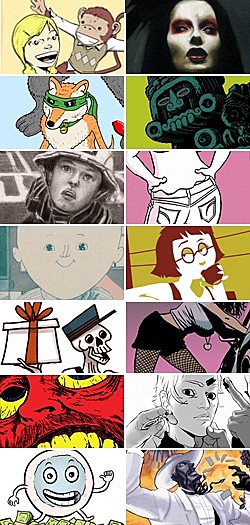 Kickstarter
Kickstarter
Founded by Perry Chen, Yancey Strickler, and Charles Adler
You're probably thinking this is hyperbole, but it's not. When sitting down to write about which publisher had the largest amount of quality material released this past year, my immediate instinct was to go with Image Comics for their wide range of new creator-owned material and promising future classics like Saga. Yet, when the site's editors suggested looking at Kickstarter, the crowd-funding platform developed to give independent artists a mechanism with which to finance and distribute their work with the help of their audience, I was amazed at how many books had been successfully funded. Elsewhere online, I had stated that Kickstarter might be reaching a high-water mark this year, but my prediction may turn out to be flat-out wrong if more and more creators turn to crowd-sourcing platforms and still find a community of people to support their efforts to work outside the traditional publisher system.
Instead of a drawn-out, high-level debate about whether or not Kickstarter is the best publisher of 2012, I'm simply going to list all of the successfully funded campaigns that were worth backing, and definitely worth reading now that they're complete:
- Alison And Her Rainy Day Robot by Fred Chao [link]
- The Alamo Chronicles by Travis Speegle III [link]
- The Astronomer by Matt Rebholz [link]
- The Bargin by K. Barrett and J.C. Grande [link]
- The Big Feminist BUT, edited by Shannon O'Leary and Joan Reilly [link]
- Carbon Grey by Hoang Nguyen, Khari Evans, Paul Gardner and Kinsun Loh [link]
- Decrypting Rita by Egypt Urnash [link]
- Dim Sum Warriors by Yen Yen Woo and Colin Goh [link]
- The Dylan Meconis Library by Dylan Meconis [link]
- Five Ghosts by Frank J. Barbiere and Chris Mooneyham [link]
- Godsend: Volume One by Jesse Bausch and Meg Gandy [link]
- Home of the Brave: Struggle and Triumph in a Broken America by Spencer Toyama and Jon [link]
- Life Begins At Incorporation by Matt Bors [link]
- LUST by Steve Niles, Ben Templesmith and Menton3 [link]
- The Merciful Vol. 1 by Adam Jack, Kyle McEwan and Dan Mackinnon [link]
- Next Town Over Volume 1: Maybe Next Time by Erin Mehlos [link]
- Pear Cider and Cigarrettes by Robert Valley [link]
- Plastic Farm: Seasons of Growth in the Fields of Despair by Rafer Roberts [link]
- Second Quest by David Hellman and Tevis Thompson [link]
- Sex and Violence by Jimmy Palmiotti, Justin Gray, Jimmy Broxton and Juan SantaCruz [link]
- The Smut Peddler, edited by Spike Trotman [link]
- SP7, edited by Ian Harker and Box Brown [link]
- Sullivan's Sluggers by Mark Andrew Smith and James Stokoe [link]
- TEDDY-1 by Joko Budiono [link]
- Telikos Protocol by Peter Cooper and Adam Burn [link]
- Terminally Illin' by Kaylin Marie and Jon Solo [link]
- Thrilling Adventure Hour: The Graphic Novel . . . And Beyond! by various [link]
- TOME, edited by Ben Templesmith, Menton3, Kasra Ghanbari and Nicholas Idell [link]
BEST TRANSCENDENTAL SYNTHESIS OF SHAKESPEARE, GRAFFITI AND NINJAS
 Prince of Cats
Prince of Cats
By Ronald Wimberly
Published by Vertigo
Available: Comics shops
In 2012 Ron Wimberly gave comics some ninjaupera galore in the form of his masterwork Prince of Cats from Vertigo. Wimberley's mix of fine art, graffiti/style wars, Shakespeare, New York in the '80s, high fashion, ninja comics and samurai films is dense and meticulous enough to make Alan Moore weep. This is The League of Extraordinary Gentlemen's cooler older brother. This is good soup. The magnitude of depth in this book only expands the longer you allow yourself to think about it. You can read it backwards, forwards and sideways and there's always something to see, something to "get." And yet with all of that, Prince of Cats is a very intimate personal work that only Wimberly could do. It is a story of the void that can grow in one's soul, and the ways that art and violence and expression attempt to fill that space frantically.
Wimberly's Tybolt is tortured by what he's not and by what he wants to become. He lives life in the spaces. He's Basquiat before the galleries. He's stalking greatness without mind. His story is at once a love letter to that version of New York and to Style Wars as well as a poetic meditation on youth and violence, art and expression, the meaning of fame, and restlessness itself. Prince of Cats is blood on the damn dance floor. It's Mercutio. It's Omar from The Wire. It's Petruchio, SAMO© and Kase 2. This book is absolutely haunted. It takes place in the '80s but feels like it's from the future. It plays with its own chronology like a DJ juggling beats. Prince of Cats rocks colors that no one else is even thinking about. Limbs and blood spray out in every direction while body shapes and silhouettes are framed in angles that call out how boring everything else has become by comparison.
That Prince of Cats is all of these things and also a cohesive and focused narrative is a feat unto itself and shows the clarity of vision that Wimberly had in approaching the work. There's a scene in a subway car that is as intense as anything else that came out in 2012. There wasn't much in 2012 that could match Prince of Cats on style, and even less on substance. This is comics for the godhood.
BEST BEVERAGE RECIPE
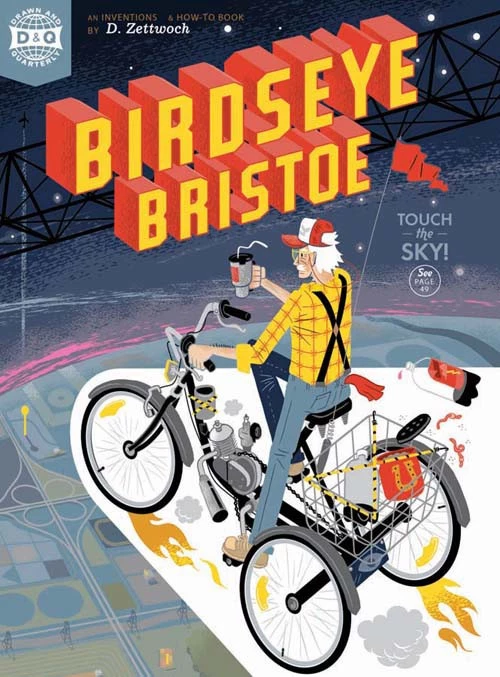 Birdseye Bristoe
Birdseye Bristoe
By Dan Zettwoch
Published by Drawn and Quarterly
Available: Comics shops, D&Q store
The Red Cow, also known as a Hot Blood Shake, is the creation of Birdseye Bristoe, the titular character of Dan Zettwoch's debut graphic novel which D+Q bills on the front cover as "An Inventions and How-To Book."
The story is that of a communications company building a Tower of Babel-sized cellphone antenna on land owned by Uncle Birdseye, whose niece and nephew are staying with him for the summer. The action is repeatedly broken up by lists, charts, maps, diagrams, drawings and interviews created or conducted by one of the two teens, generally presented as excerpts from their journals which they are almost always writing in.
One such page is devoted to the Red Cow, a three-or-four-ingredient, seven-step concoction served out of a large plastic cup and meant to be drunk without the aid of a spoon or straw (the goal is to give yourself a foamy pink moustache).
You'll have to read the comic to get the full recipe and the various tips Zettwoch includes, but the main ingredients are generic vanilla ice cream, more ice cream ("Maybe strawberry," the recipe suggests), room temperature Lucky's Red Thunder Red Crème Soda and a pinch of cayenne pepper ("to put hairs on your chest," although Uncle Birdseye's nephew Clint J. Murgatroyd takes his without the pepper).
It's but one of the many fun, educational pages in Zettwoch's extremely entertaining comic. Others include the many, many things one can build out of bungee cords and three-Liter soda bottles, a collection of various types of construction trucks, logos of mysterious origins, essays on a legendary giant pike and the virtues of geodesic domes, and an even easier recipe for red and green "Fingerwiches" (kinda like finger sandwiches, but with fewer syllables).
MOST TASTEFUL IMPLICATION OF INTER-SPECIES INTERCOURSE
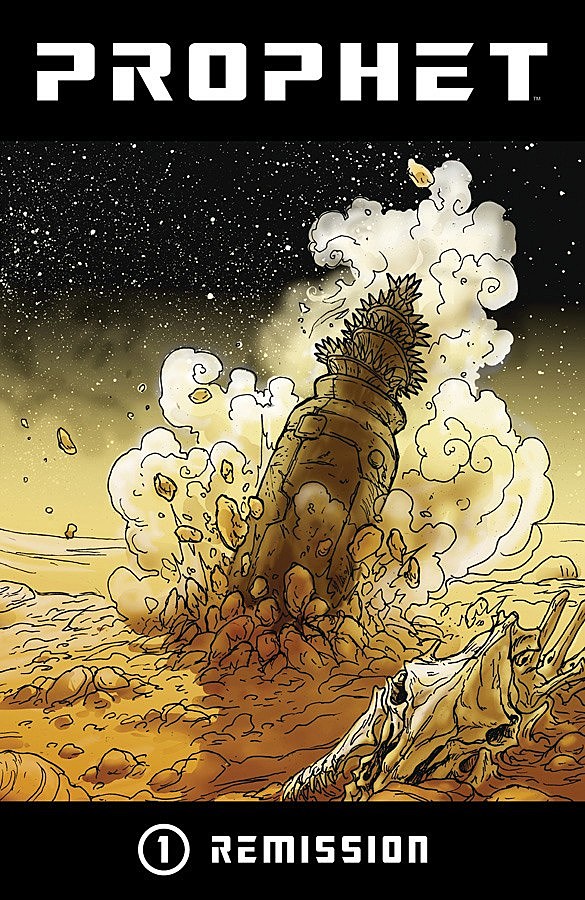 Prophet
Prophet
Written by Brandon Graham
Artwork by Simon Roy, Farel Dalrymple, Brandon Graham, Giannis Milonogiannis, Marian Churchland
Published by Image Comics
Available: Comics stores (print) / ComiXology (digital)
This brilliant sci-fi re-imagining of Rob Liefeld characters from the 1990s characters quickly established itself as a critical darling and can already be found on dozens of other best-of-the-year lists. With its seemingly endless collection of great ideas, stirring plot, and otherworldly art, Prophet would have made ours even without an implication of the cross-species boogie. But Brandon Graham and Simon Roy got down to it in their very first issue, in the bowels of a living jell city, with a recently-awakened John Prophet clone and, I swear to The Great Eye, a walking vagina. And it didn't stop there. Via the magic of flashbacks, we got a glimpse of the romance between Old Man Prophet and the reptilian Yilala. Now there may be something budding between an alien assassin named Rein-East and our old robotic buddy Diehard.
Without irony, Prophet is uncommonly imaginative, truly evocative, and beautifully immersive thanks to the work of a rotating cast of artistic geniuses, making it one of the most refreshing new mainstream comic books we've read in years. But still: bug sex.
BEST COMIC ABOUT HOW CRIME ACTUALLY DOES PAY BUT ONLY IF YOU'RE NICE ABOUT IT
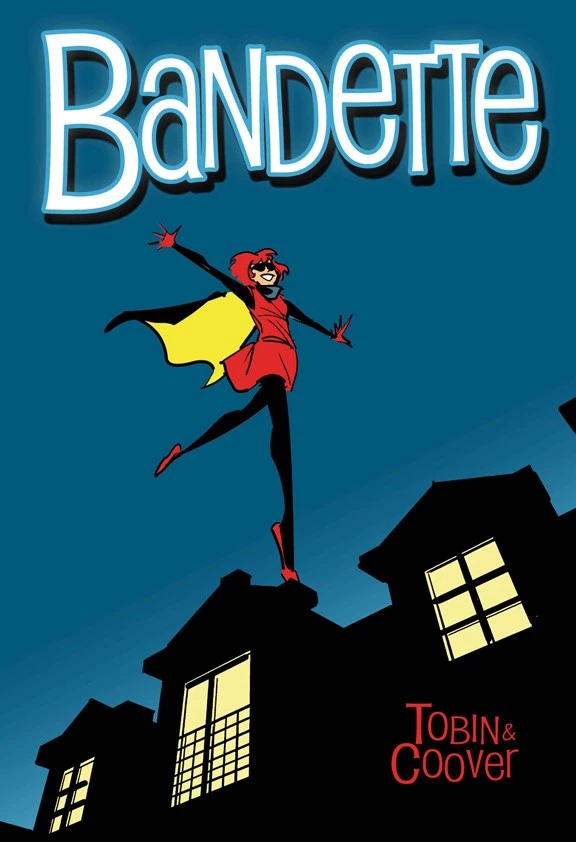 Bandette
Bandette
Written by Paul Tobin
Artwork by Colleen Coover
Published by MonkeyBrain Comics
Available: ComiXology
When MonkeyBrain Comics launched in July, they did it with some of the best comics of the year, digital or otherwise, and Bandette is far and away the best of that crop.
If you've been paying attention that probably doesn't come as much of a shock. Paul Tobin and Colleen Coover are up there with Batman and the concept of cosplay as things that define the words "ComicsAlliance Favorites," mostly because every comic they do has been absolutely fantastic. Their last two collaborations -- Gingerbread Girl, a psychological drama featuring a bird with a penchant for narration, and Banana Sunday, the all-ages story of the new girl in town and her talking monkeys -- were pretty darn great all on their own, but Bandette has taken things to a whole new level.
Modeled after European comics adventures like Tintin, Bandette follows a charming costumed thief and her Shadow-esque squad of "urchin" helpers. The story plays out with twists and turns that never stop being fun. It's the perfect showcase for Coover's art, too, with her clean linework and muted watercolor palette adding to the bain-dessiné feel of it. Her faces are expressive and her characters are beautifully designed, which just adds to how easy it is to fall in love with this story. And over the past three issues, that's exactly what I've done. As jaded as I might get after years and years of reading every comic I can, Bandette is one of the few that I can read every single time it comes out with a smile on my face the entire time. Of course, it doesn't hurt that it's only 99 cents for 15 dense pages, either.
MOST BLASPHEMOUS SCI-FI ACTION SERIES
 Punk Rock Jesus
Punk Rock Jesus
By Sean Murphy
Published by Vertigo
Available: Comics shops (print) / ComiXology (digital)
These days, it's customary to list creator credits right on the cover of these kinds of comics. But Punk Rock Jesus doesn't just list Sean Murphy as the writer and artist and genius mastermind superstar. It gives us his signature right beneath the word "Jesus." The bravado carries forth into each issue of this series, as Murphy puts pen and ink to work on his personal version of the second coming.
In Murphy's telling, Christ returns by way of corporate pandering and high-tech cloning and media oversaturation. And it's probably not Christ at all, nor even a clone of him, but it is, as the title promises, a "Punk Rock Jesus" in more than just metaphorical terms. We watch as young Chris grows like a lab rat by way of Truman Burbank under the corrupt eye of the J2 program, and the muscle-bound Thomas, a deeply conflicted former IRA member with the heart of Batman and the skills of every action hero Tom Cruise wishes he could be, keeps watch over the young savior-to-be.
Sean Murphy is an artist turning his attention to writing, but he doesn't skimp on the words or textual density of this comic. It's filled with satire and action and ideas and declarations about those ideas. It might be a bit too over-earnest, even with its defiant attitude, but Murphy makes up for every on-the-nose speech with a palpable sense that he's aiming for something ambitious. Punk Rock Jesus isn't one of those high-concept comics with a thin-but-easy-to-grasp-premise that lacks anything interesting beyond the opening issue. Murphy doesn't stop at the elevator pitch. He turns it into a saga, condensed into a handful of issues, with increasing escalation and warring factions.
Maybe this comic will make you think about the media or religion or the way we're manipulated by what we have been told. Or maybe it will just provide you with a thrilling diversion, etched in crisp black and white. You win either way.
Come back tomorrow for the third part of ComicsAlliance's celebration of the best comics of 2012, when we will honor yet another hero who lost their life in the line of totally made-up duty. If you missed it, click here to read part one.
More From ComicsAlliance

![Bond After Brexit: Kieron Gillen Declassifies ‘James Bond: Service’ [Interview]](http://townsquare.media/site/622/files/2017/03/Service_McKelvie-feat.jpeg?w=980&q=75)


![I’m A Maniac For Flavour! ‘All-Time Comics’ Taps Into Old-Time Ad Nostalgia [Exclusive]](http://townsquare.media/site/622/files/2017/03/atcads_featured1.jpg?w=980&q=75)
![The Cats Deserve Their Fame: Ananth Hirsh and Yuko Ota Dive Back Into ‘Johnny Wander’ [Interview]](http://townsquare.media/site/622/files/2017/03/JWOMNI-COVER-ONI-PRESS-EDITION-4x6-COMP-CA-FEATURED-IMAGE.jpg?w=980&q=75)
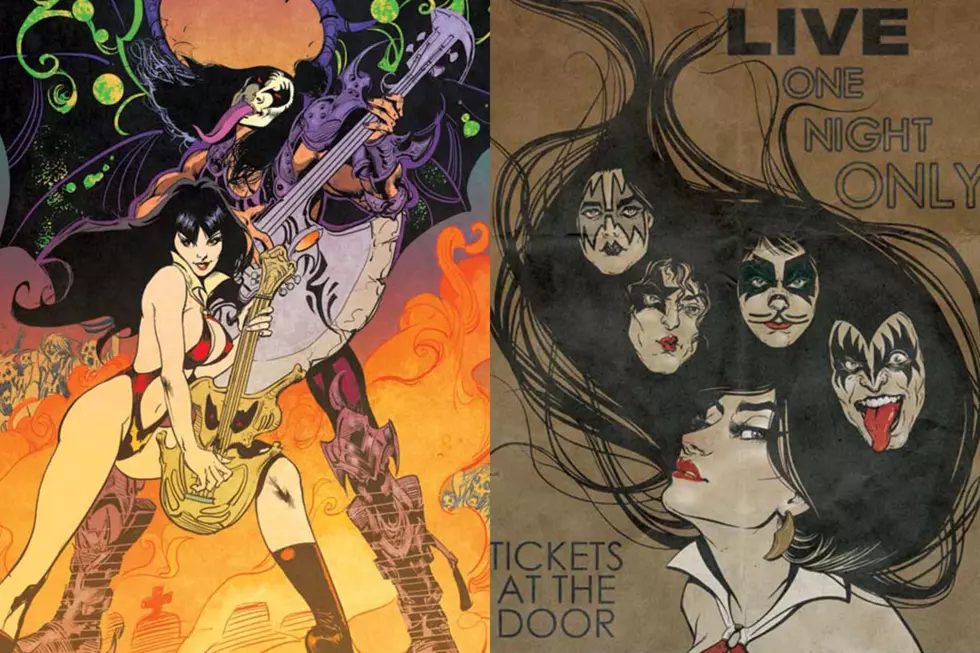
![Steven Andrews Offers a Tour Of Toronto In ‘Yonge at Heart’ Anthology [Back Pages]](http://townsquare.media/site/622/files/2017/03/yongeatheart-feat.jpg?w=980&q=75)

